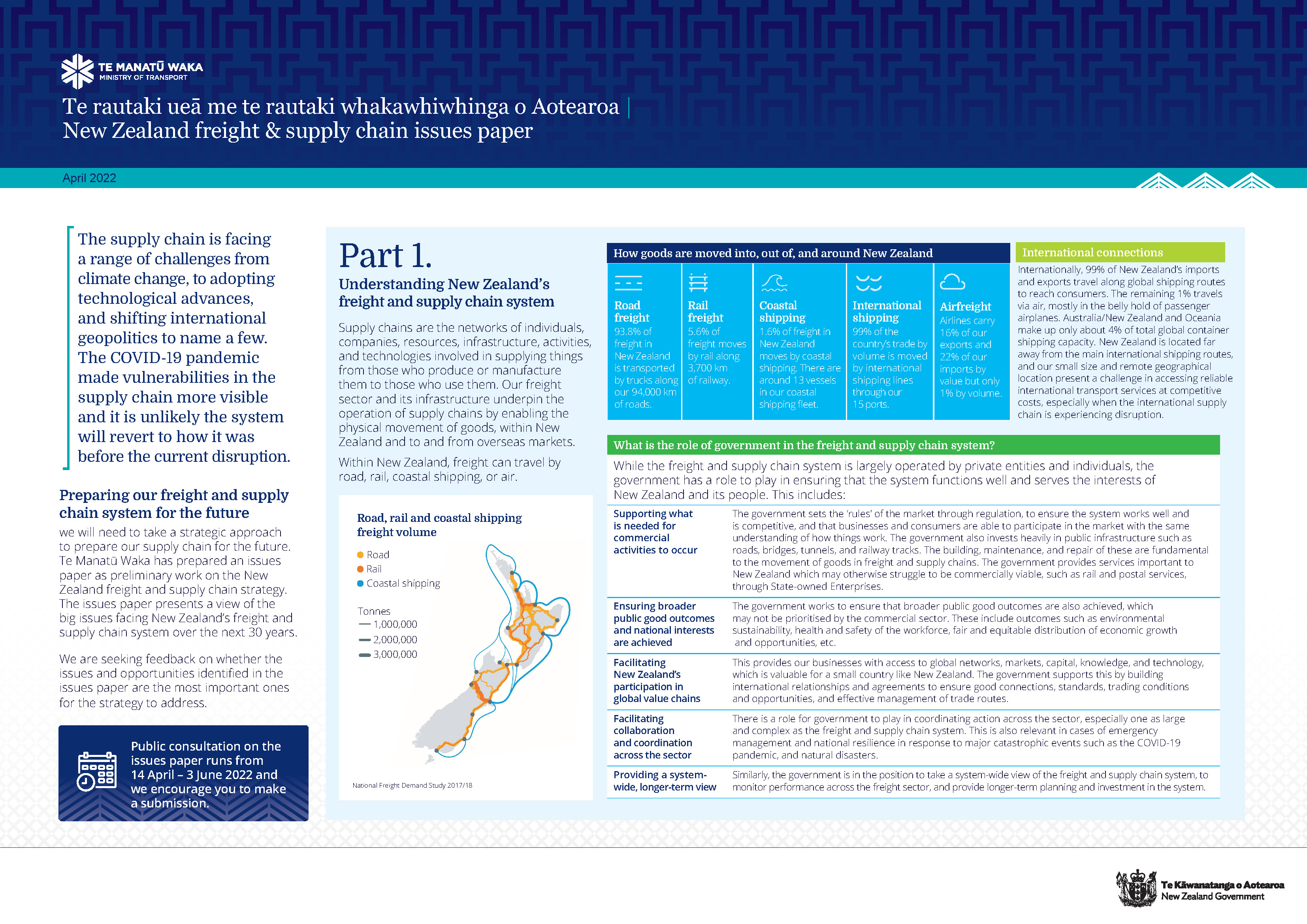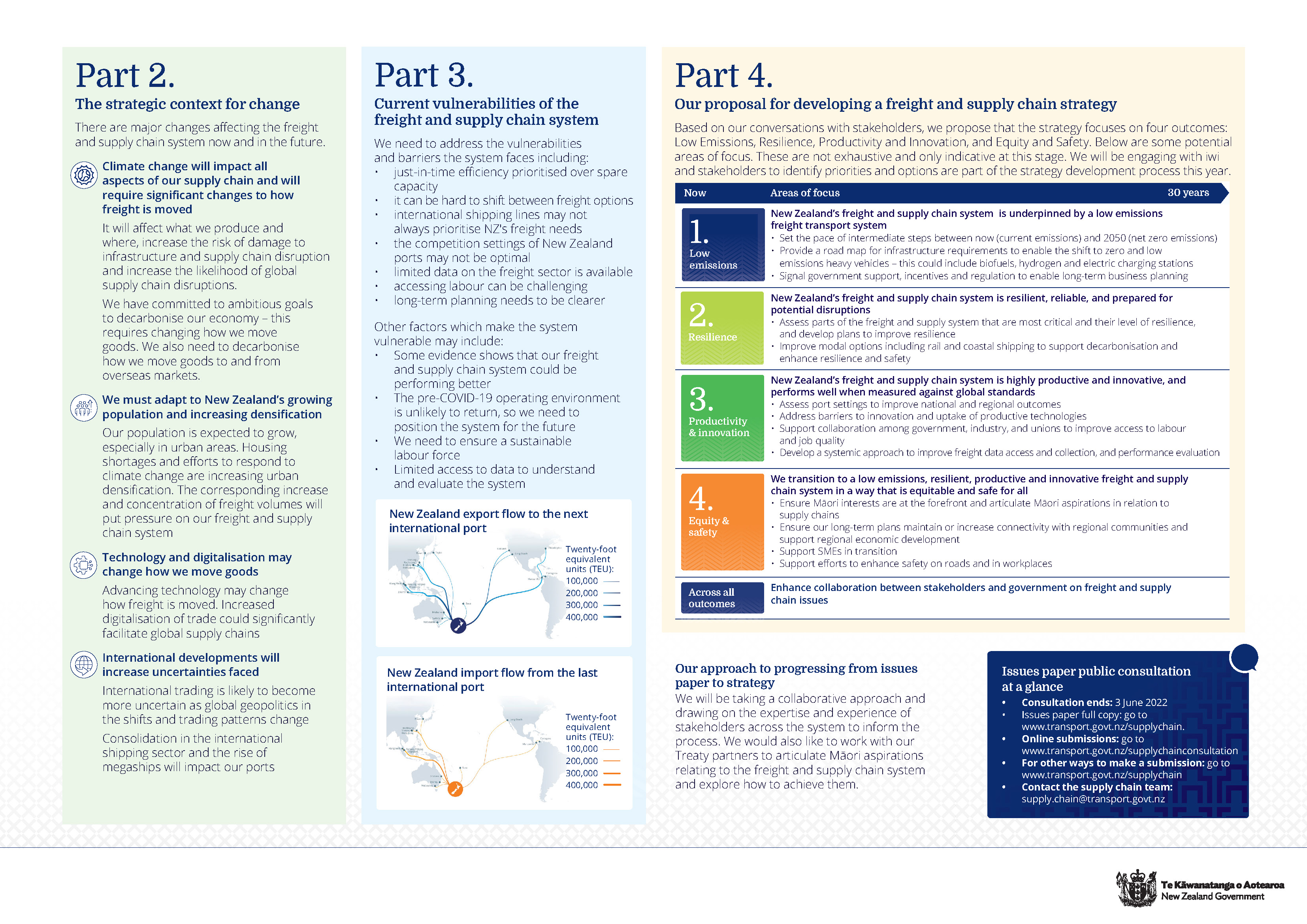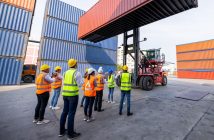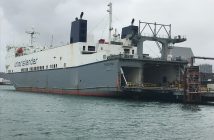Experts have raised concerns over the major changes facing New Zealand’s freight and supply chain system laid out in a paper released for public consultation

Te Manatū Waka Ministry of Transport has prepared an issues paper as preliminary work on the New Zealand freight and supply chain strategy.
The paper presents a view of the big issues facing New Zealand’s freight and supply chain system into the future. It lays out a strategic approach for responding collectively to these issues and taking advantage of opportunities.
Click to view a summary of the paper:
The University of Auckland’s Professor Tava Olsen says the paper has significant flaws in its strategy going forward.
“For example, it makes frequent reference to ‘our supply chain’ but New Zealand doesn’t have one supply chain – it has many. And supply chains are, by definition, heterogeneous. Indeed, learning how to target the right supply chain strategy for a given product is ‘Supply Chain 101’.
“A country-wide one-size-fits-all strategy independent of product type seems destined to fail. In particular, there is usually a trade-off between productivity and resilience, yet the proposed strategy seeks both with no acknowledgement of this trade-off.
The paper also does not acknowledge that if we want commercial enterprises to invest in resilience, then government will need to play a role in that as well.
“The paper explicitly suggests “building surplus capacity” to improve resilience – this may well be warranted for areas of strategic importance to the country, but the government is going to have to put forward investment if it wants it to occur – which is nowhere acknowledged in the paper that I can see.”
TERNZ Transport Research Director Dr John de Pont says road transport has the largest market share even though it has the worst emissions performance.
“This is primarily because of its efficiency, reliability, and relatively low cost.
“For most freight tasks, using the other modes (rail or coastal shipping) requires a road transport connection at one or both ends of the trip. The costs of these modal transfers means that only quite long rail or coastal shipping legs are economically viable.
“Improving the efficiency and reducing the cost of modal transfers would make shorter distance freight movements by rail and coastal shipping more economically viable.”
Auckland University of Technology’s Dr Bill Wang says the paper overlooks international freight and supply chain challenges.
“New Zealand heavily relies on international trade, so this paper should not confine itself to the domestic issues.
“In my view, the worst thing is that the Covid crisis has significantly damaged our confidence on globalisation, and the global supply chain.
“I am positive about globalisation and would like to think it is a kind of spirally-rising self-restoration and development opportunity. Consequently, the global supply chain will improve its resilience to manage bigger challenges in the future.”
The University of Canterbury’s Dr Mesbahuddin Chowdhury says key challenges for the global supply chain during this pandemic time are to find alternative supply sourcing, alternative distribution channels, to enhance the visibility of supply chains so that firms can rapidly assess any disruptive situation, and most importantly how to make the supply chain short (from global sourcing to local/regional sourcing).
“It is obvious that China’s new lockdown will create a stress on New Zealand supply chains as we are highly dependent on China. We have seen this issue in 2020 when lockdowns in China created a chaotic environment for many countries across the globe. Reducing dependency on China is a way to address this problem.
He says this may not be feasible for New Zealand considering the amount of existing businesses, but we may need to think of alternative sourcing in the coming days.
Minister’s foreword
Transport Minister Michael Wood says the paper reflects the Ministry’s engagement with a broad range of stakeholders from across the freight sector and supply chain system between August and October 2021.
“Covid-19 has been hard for many of those involved in the freight and supply chain system, but it has helped us reflect on how the system is performing and vulnerabilities in the current system.
“During the Covid-19 pandemic, we have witnessed around the world, and experienced in New Zealand, the impacts of major disruption in the freight and supply chain system.
“These include congestion at ports, the loss in capacity and reliability of air and shipping services, difficulties securing shipping containers and so on – all contributing to a very difficult operating environment, delays in deliveries, and increased costs to businesses and consumers.
“The pandemic has also highlighted just how complex, extensive, and interdependent the whole system is – when something goes wrong in one part of the system, it has ripple effects on the rest of the system. The grounding of a container ship in the Suez Canal in 2021, and the resulting delays it caused around the world, is one example of this.
“While our freight and supply chain system is still grappling with these disruptions, it also faces some fundamental, longer-term shifts especially with climate change, demographic changes, technological advancement, and developments in the international context.
“These changes make it less likely that we will return to how things were before the pandemic. There are complex challenges involved, but more importantly, there are significant opportunities to review and design the system to achieve the best outcomes for New Zealand.
“This issues paper is the first step in that direction. It identifies the key changes in the operating context of New Zealand’s freight and supply chain system, and proposes an approach to developing a New Zealand freight and supply chain strategy for the next 30 years.
“Through the development of a strategy, we can build a long-term and holistic view of our system, agree on the outcomes that we want to achieve, and direct resources to priority actions to maximise impact.”
Wood says he hopes people will participate in this consultation process and give their views.
“The output of the work can only be as good as the input we all provide from a diverse range of perspectives, experiences, and expertise.”









